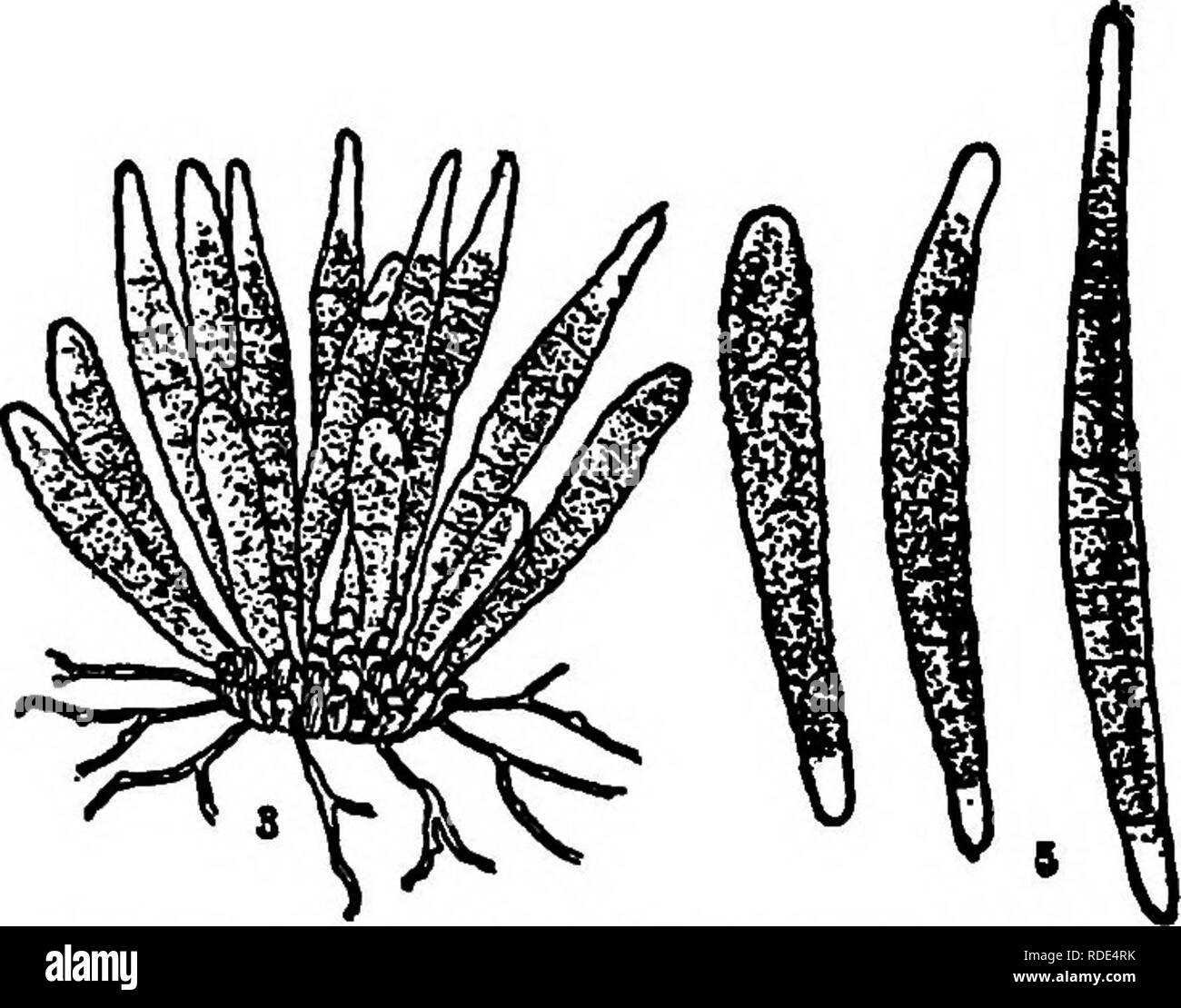. The fungi which cause plant disease . Plant diseases; Fungi. 658 THE FUNGI WHICH CAUSE PLANT DISEASE Exposorium Link (p. 657) Sporodochia convex, compact; conidiophores dark, simple, densely compacted; conidia single, oblong to cylindric, pliu:isep- tate. Some twenty-five species. In part=Coleroa and Coryneum. See pp. 227, 236. E. juniperinum (E.) Jacz. = Coryneum juniperinum. See p. 236. E. laricinum Mas. is fomid on living larch twigs. E. tiliae Lk. grows on young shoots of Tilia. E. palmivorum Sacc.*''. Fig. 446.—E. palmivorum. 3, a sporodochium, 5, spores. After Trelease. Spots amphigeno

Image details
Contributor:
The Book Worm / Alamy Stock PhotoImage ID:
RDE4RKFile size:
7.1 MB (324.1 KB Compressed download)Releases:
Model - no | Property - noDo I need a release?Dimensions:
1784 x 1400 px | 30.2 x 23.7 cm | 11.9 x 9.3 inches | 150dpiMore information:
This image is a public domain image, which means either that copyright has expired in the image or the copyright holder has waived their copyright. Alamy charges you a fee for access to the high resolution copy of the image.
This image could have imperfections as it’s either historical or reportage.
. The fungi which cause plant disease . Plant diseases; Fungi. 658 THE FUNGI WHICH CAUSE PLANT DISEASE Exposorium Link (p. 657) Sporodochia convex, compact; conidiophores dark, simple, densely compacted; conidia single, oblong_to cylindric, pliu:isep- tate. Some twenty-five species. In part=Coleroa and Coryneum. See pp. 227, 236. E. juniperinum (E.) Jacz. = Coryneum juniperinum. See p. 236. E. laricinum Mas. is fomid on living larch twigs. E. tiliae Lk. grows on young shoots of Tilia. E. palmivorum Sacc.*''. Fig. 446.—E. palmivorum. 3, a sporodochium, 5, spores. After Trelease. Spots amphigenous, minute, suborbicular, 1-3 mm. in diameter, brown, scattered; sporodochia superficial, densely gregarious, punctiform, black; 30 x 60-80 ii; conidiophores oblong, con- tinuous, reddish olive, 5-6 x 14^16 /*, conidia borne singly, f usoid, straight or curved, apically obtuse or acute, basally obtuse, 8 to 10-septate, not constricted, olive-brown, ends paler, 8-9 x 80-90 At. On palms, especially species of Phoenix in America. E. presii Bub. on species of Phoenix in Europe is very similar to the preceding species. In the Tuberculariacese-Dematiese-Dictyosporae Thyrococcum sirakoffi Bubak forms black tubercles rnxder bark of mulberry and kills the twigs."*. Please note that these images are extracted from scanned page images that may have been digitally enhanced for readability - coloration and appearance of these illustrations may not perfectly resemble the original work.. Stevens, Frank Lincoln, 1871-1934. New York : Macmillan